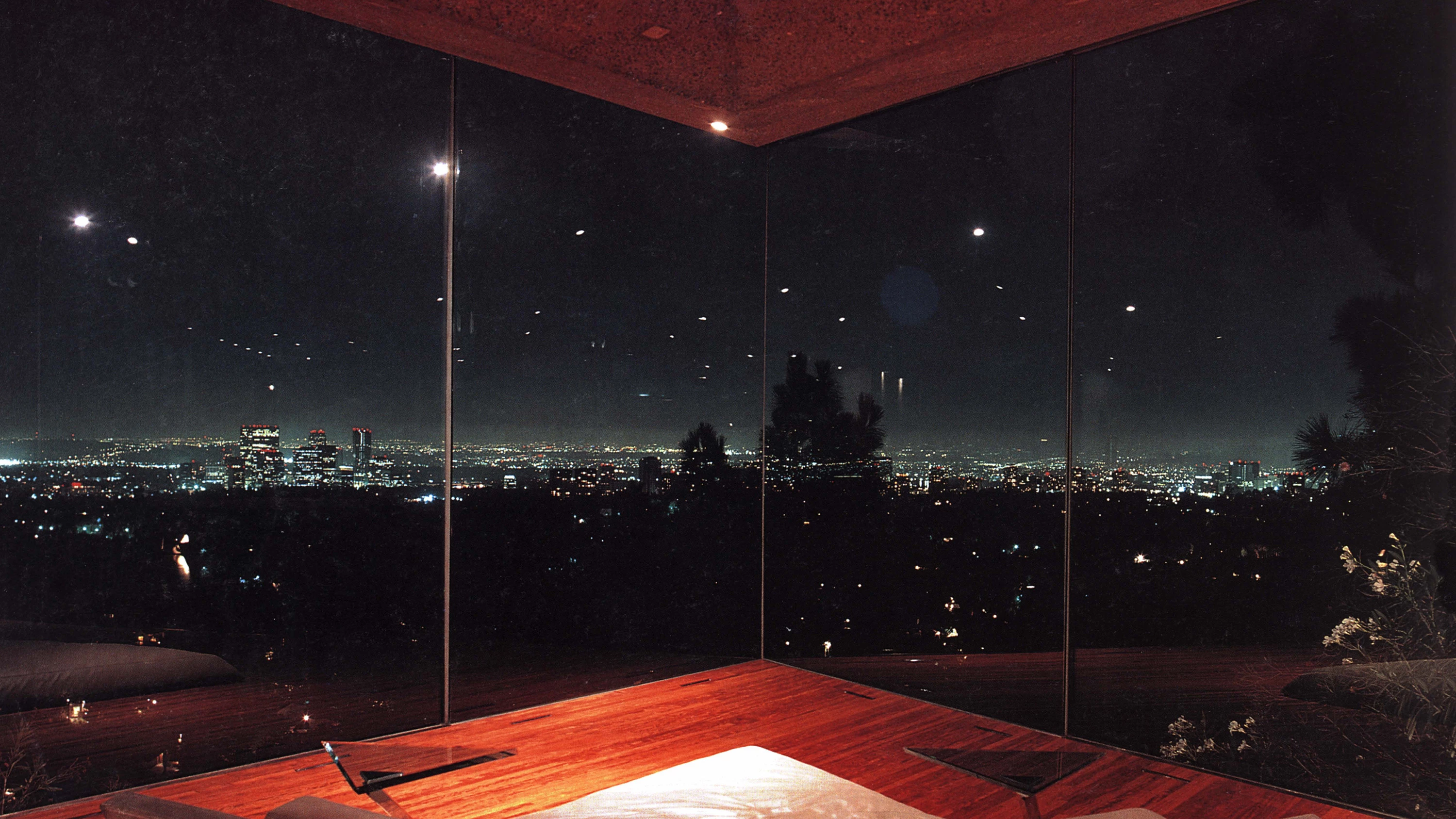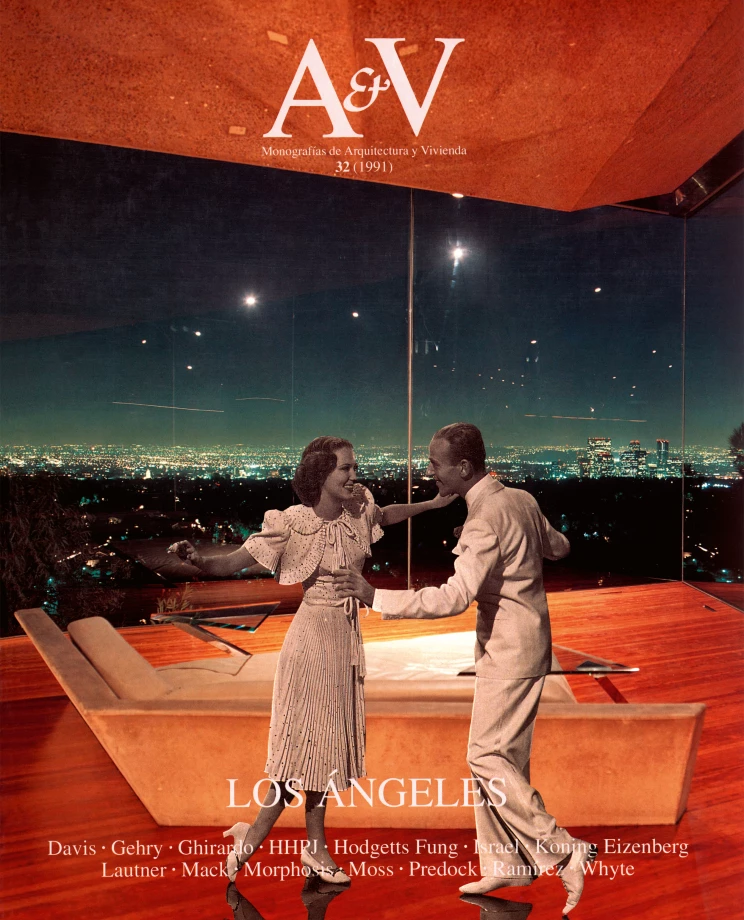
John Lautner, Goldstein Residence, Beverly Hills
Los Angeles from the air is like an artificial oasis expelled from the desert. It is not a city in the strict sense of the word, and neither could we call it a province. Considering its huge expanse, it is natural for each resident to identify himself with that small portion or ‘community ’ he feels he belongs to: Pasadena, Glendale, Watts, Santa Monica, etc. An endless line of one-family homes and palm trees confirms the generally held impression that this is one of the world's least dense metrópoli, but then its bloodcurdling loop boasts some of the tallest and most terrifically gorgeous skyscrapers of the West Coast. There is always mention of the flatness and seemingly boundless stretch of its rectilinear streets, but people also talk about the hanging houses of the mountain slopes. Some see the greatest deliria of eclecticism here, while others look to the culminating examples of the Modern Movement in America (Wright, Schindler, Neutra, etc.). Disneyland and the Lovell House, the Queen Mary stranded in the port o f San Pedro and Frank Gehry’s version of Deconstructivism. What is Los Angeles? Heaven or hell?
This part of the world has a name that bespeaks its old celestial purposes, and almost the entire nomenclature of its ranches and missions evokes the spiritual concerns of the colonizing friars. Then came the English-speaking people of the East in search of a romantic country with intense Mediterranean light and fertile orchards. This promised land would have Valencian oranges, vineyards, Andalusian olives, date palms and an endless number of tropical plants. The dream of prosperity and eternal youth was sparked by two unexpected phenomena: oil - which flowed almost spontaneously in the backyards of some homes - and cinema. Thus would Los Angeles, from the beginning of the century and on, provide gasoline for the automobile and mythic food for all souls. In due time (the name of the place engenders it) budded the aeronautic industry. The old wings of our imagination come true. Howard Hughes was the new patron saint, with his own cathedral in the huge aluminum dome where the industrial miracle of Spruce Goose, the world’s largest wooden-structured airplane, is kept (and adored).
More than for its speed, Los Angeles stands out for its mobility. Nothing there is solid and lasting. Just like the impermanent image of the movie screen, everything changes from one moment to the next. There is neither a center nor a periphery. Instead, mnemonic airports for our urban sensibilities to land on for a while. Physical space (streets and buildings) alters constantly, but that is not the point: what counts here is the instability of our conscience. This city, a universe in itself is like a giant projecting screen, an occasional (and casual) materialization of our longings and fears. Movie-made Los Angeles. Sweet dreams and nightmares. Where everything we say can come true.







